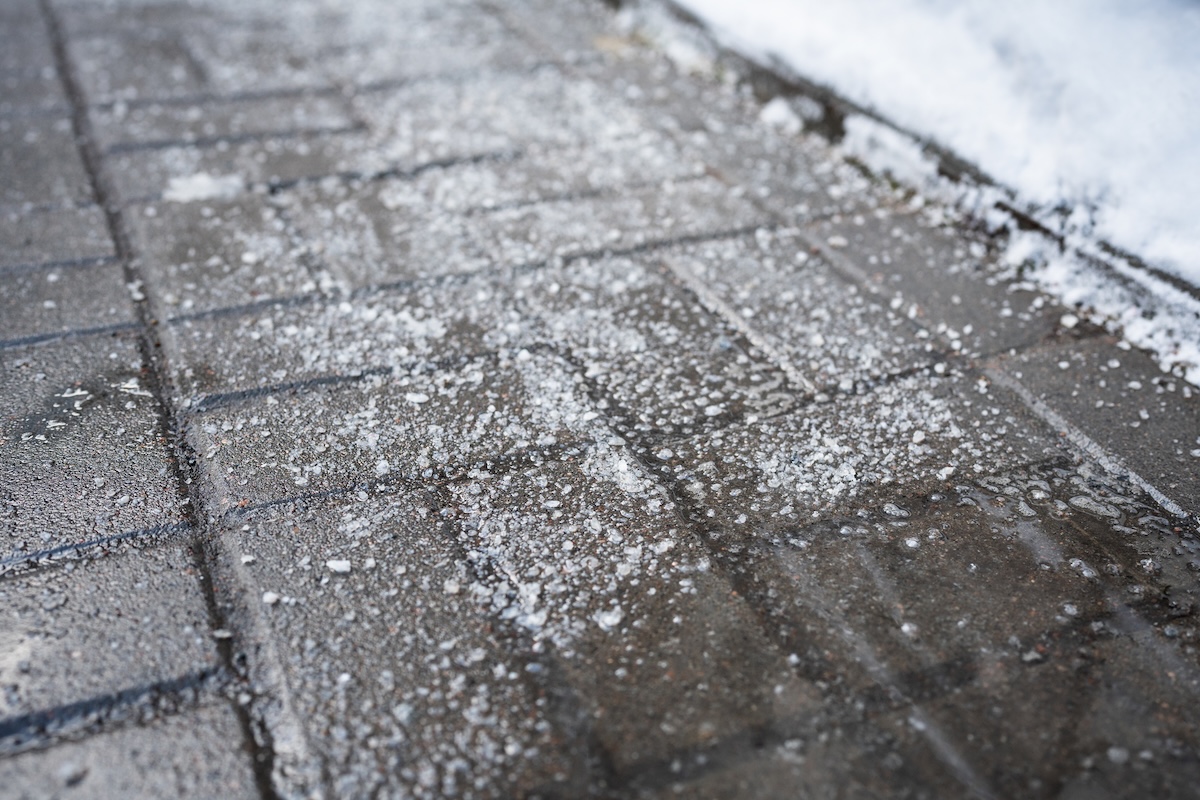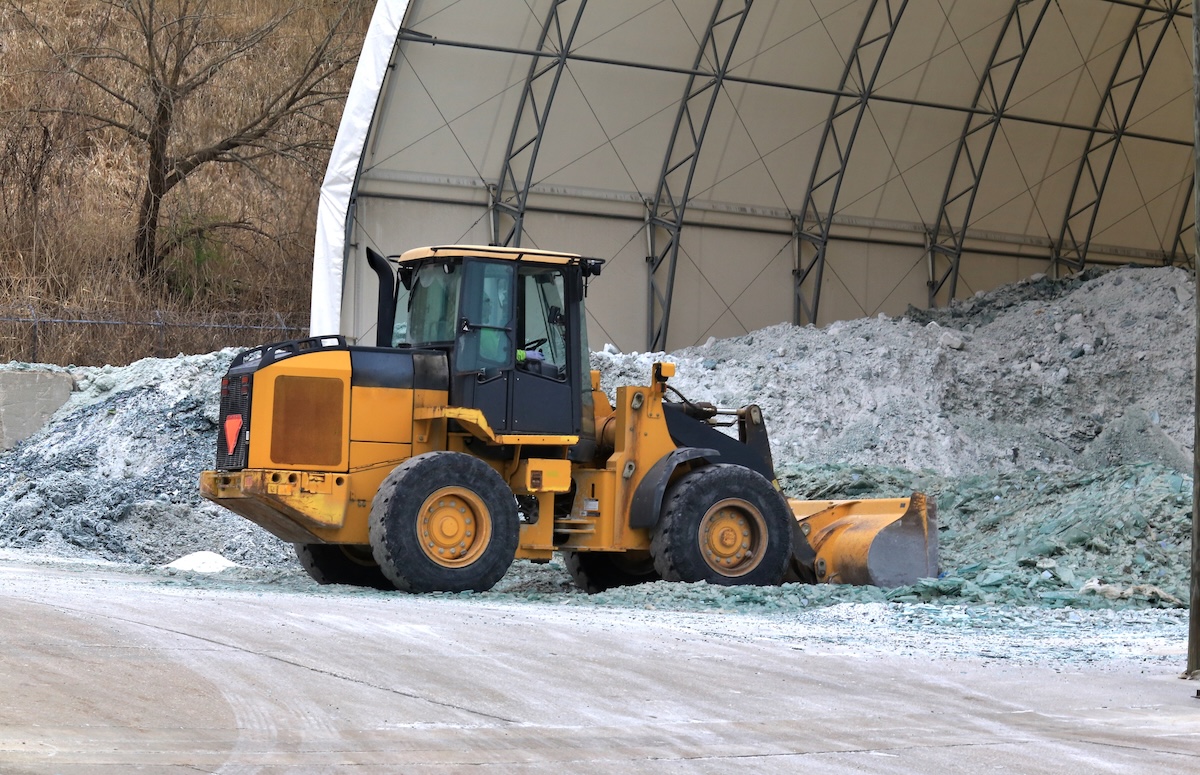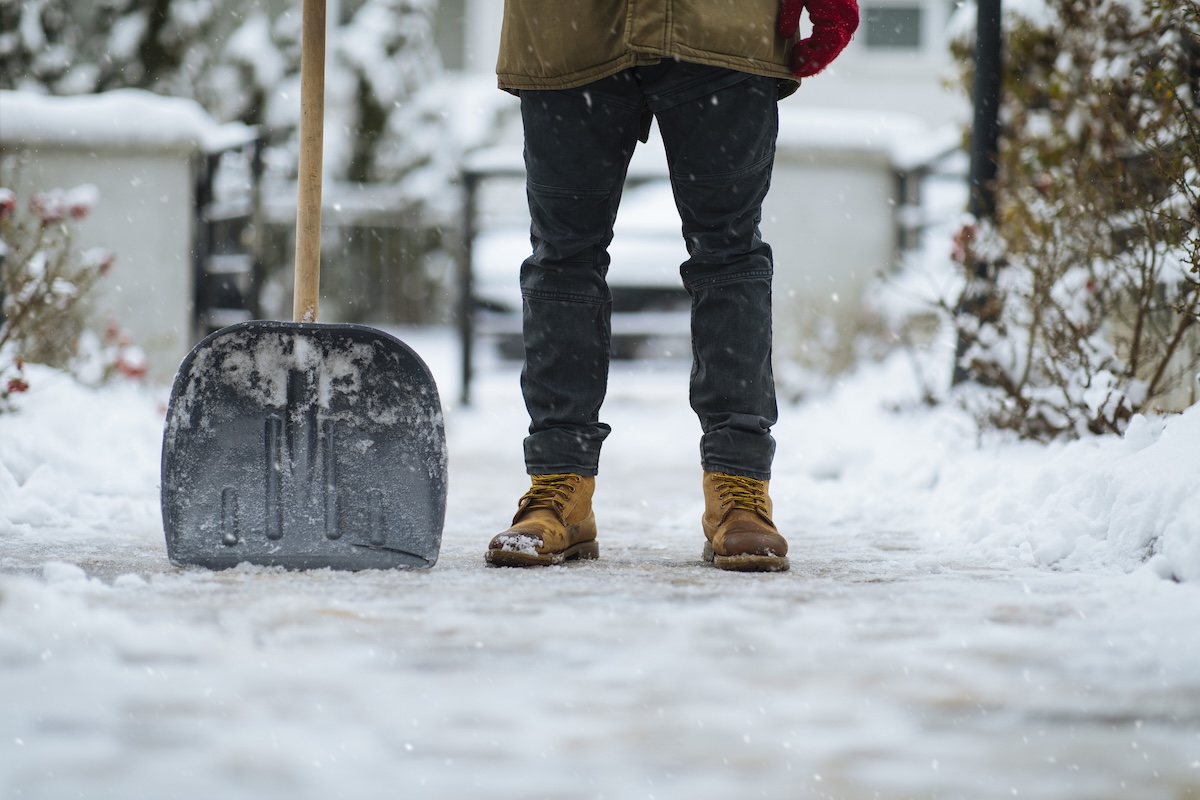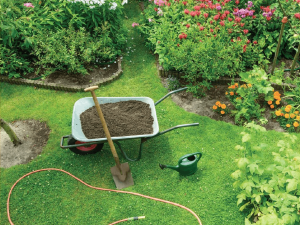We may earn revenue from the products available on this page and participate in affiliate programs. Learn More ›
Several states are struggling to keep roads open due to an ice melt shortage this season. Massachusetts, Connecticut, Maine, Pennsylvania, and New York are reporting the most problems, but the shortage is even being felt as far west as Michigan. In these areas, shelves are bare in big box stores like Walmart and Sam’s Club to local hardware stores and national chains, including The Home Depot, True Value Hardware, and Lowe’s.
The ice melt shortage is causing roads, sidewalks, driveways, and parking lots to remain dangerously icy after recent winter storms hit the Northeast and Mid-Atlantic regions. One district in Connecticut had to cancel school due to a lack of road salt to clear local roads. In eastern Pennsylvania, one county declared an emergency because of the shortage. And New York Governor Kathy Hochul issued an executive order that declared a state disaster emergency because of the shortage.
Many homeowners and municipalities are scrambling to get their hands on ice melt or find effective alternatives to melt the snow and ice still accumulating this winter. Here’s more about why there is an ice melt shortage and safe ways to tackle ice if you can’t find commercial ice melt where you live, such as making your own de-icer.
What is Ice Melt and Why Is it Important?
For those living in areas prone to ice and snowstorms, the value of ice melt doesn’t go unnoticed. Icy driveways, sidewalks, and roadways are an accident waiting to happen. While you can try to chop away at the ice with picks and shovels, that takes a lot of work. Therefore, most people rely on ice melt products to get the job done.
Ice melt, or de-icing salt, is a chemical substance used to melt snow and ice. The most common types of ice melt are made from sodium chloride (also known as rock salt), calcium chloride, magnesium chloride, and calcium magnesium acetate. These products lower the freezing point of water, making it more difficult for ice to form on surfaces like streets and driveways. It also improves traction to help prevent slipping and sliding. It’s always a good idea to keep some de-icer on hand in your garage and in the trunk of your car.

Reasons for the Shortage
With all the recent chaos resulting from a shortage of ice melt, many people are wondering why this is happening. Below is a summary of the possible reasons shared by a variety of experts.
- Recent mild winters. Because the last few winter seasons have been mild, some believe that stores didn’t order enough ice melt products since they didn’t anticipate the level of storm activity this year.
- Back-to-back storms. Areas like Lehigh Valley, Pennsylvania, and Western New York have gone through more rock salt than expected due to more frequent storm activity. They simply can’t keep up with the demand.
- Supplies were sent south. Apparently, manufacturers that supply ice melt shipped substantial inventory to warehouses south of New England when southern states were experiencing severe winter weather. Now northern states like Maine are getting hit with back-to-back snowstorms, and local hardware stores are struggling to keep up with demand.
- Move away from imported salt. Local suppliers in New York blame the shortage on the push to move away from imported salt. There were simply not enough contracts in place to keep up with the demand during recent winter storms.
- Delivery issues. Some people in smaller towns believe that there have been issues with getting deliveries to their communities, while more populated areas closer to cities have been prioritized.

Ice Melt Alternatives
With the ice melt shortage in full effect, many people are turning to alternatives to stay safe. If you enjoy DIY projects, you may be interested in creating your own homemade ice melt. You’ll just need common ingredients like salt, fertilizer containing ammonium sulfate, or isopropyl rubbing alcohol mixed with dish soap.
Here are some other solutions for melting ice on surfaces like driveways, walking paths, and front stoops if you can’t find commercial ice melt:
- Table salt. Common table salt is essentially a more refined version of rock salt, which can lower the melting point of ice to approximately 15 to 20 degrees Fahrenheit. Keep in mind that, like rock salt, table salt can kill grass and other plants surrounding your driveway or walkways, so be sure to protect them when applying it to your outdoor surfaces.
- Sugar beet juice. Beet juice can also lower the melting point of ice and snow. While this is another natural ice melt option, the deep hue of the beet juice may stain surfaces like concrete. To avoid this, clean up the juice as soon as the ice melts.
- Vinegar. The acetic acid in vinegar can lower ice’s melting point. It works best when mixed with an equal amount of hot water.
- Wood ash. Ash from your wood-burning fireplace can help make outdoor surfaces safer. It contains potassium, which can help to slowly melt ice, but wood ash is best for adding traction to a slick surface.
- Snow melting mats. You can purchase portable electric pads, like this highly rated option available at Amazon, that are placed on top of a driveway or sidewalk to keep the area warm to prevent snow and ice from forming. While you’ll need to make an investment up front for these mats, you won’t have to worry about finding ice melt again.
In addition to one or more of the ice melt alternatives listed above, you’ll want to add a material to create traction on slippery surfaces. Some natural options include sand, alfalfa meal, birdseed, clay cat litter, dry coffee grounds, sunflower seeds, and wood chips.



